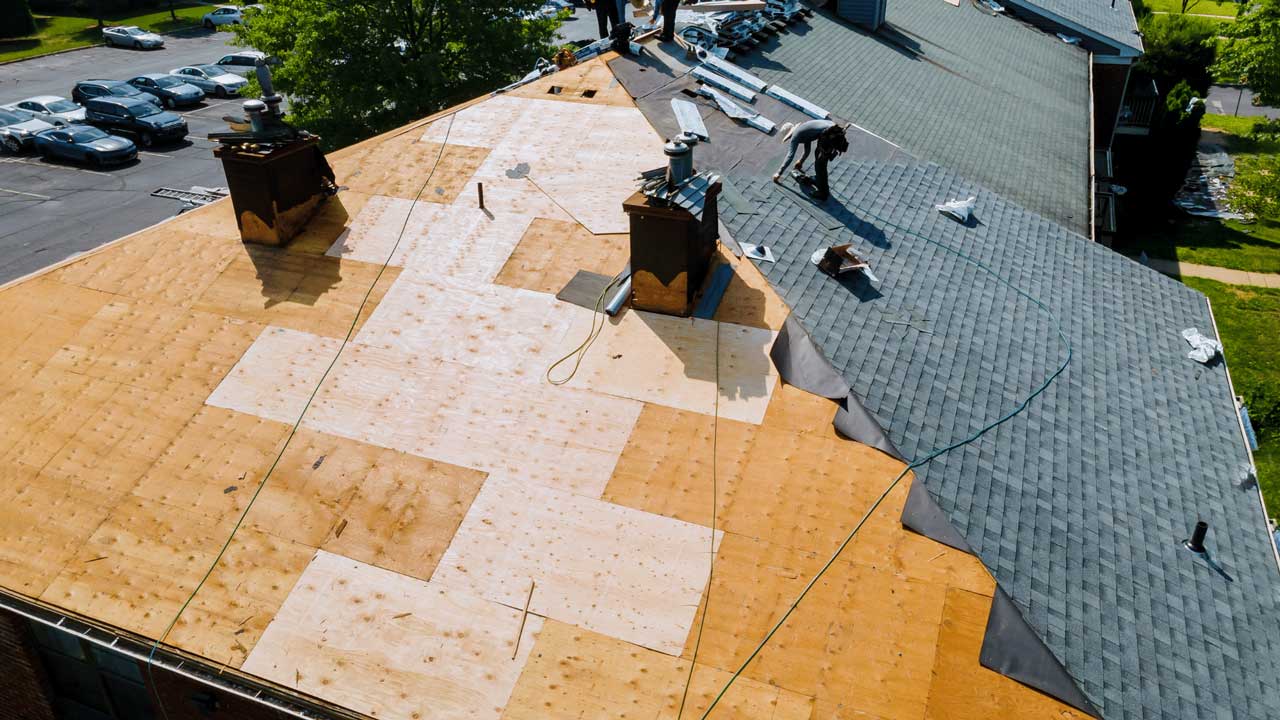Residential construction projects often require the use of underlayment to secure flooring materials and provide a stable base for them. To ensure that these materials are properly installed, it is important to have an understanding of the different types of underlayment available and their specific uses in residential construction projects.
This article will examine the various types of underlayment used in residential construction, discussing the advantages they offer and how they can be used effectively in order to achieve optimal results.
Understandably, selecting the right type of underlayment is essential when planning any residential construction project. Different types of underlayment differ widely in terms of material composition, application techniques and cost, making it critical for all involved parties to understand which option best meets their needs.
In addition, due to its integral role in providing long-term durability and stability for flooring surfaces, proper selection and installation of underlayment should not be taken lightly by anyone undertaking a home improvement or renovation project.
What Is Underlayment?
Underlayment is a layer of material that serves as a base for flooring or roofing applications. It acts as an additional barrier between the subfloor and finished surface, providing cushioning to absorb impact and reduce noise, and moisture protection against water damage.
Installation tips should be followed carefully in order to ensure proper placement of underlayment materials; these tips vary depending on the type of material being used.
The most common types of underlayment are those made from felt paper, particleboard, foam sheets or rolls, cork tiles, rubberized asphalt membranes, self-levelers and plastic sheetings.
Felt paper provides superior moisture protection but lacks soundproofing qualities; particle board offers more stability than other options for floating floors and can provide some acoustic insulation; foam sheets/rolls offer shock absorption but do not necessarily protect against liquid spills; cork tiles act as both thermal insulators and dampeners; rubberized asphalt membranes work well in wet areas such as bathrooms or kitchens due to their waterproof properties; self-levelers allow for leveling irregularities before installation of floor coverings; finally, plastic sheetings are best suited for temporary installations where cost is a factor.
No matter what option you choose when installing underlayment it is important to consider your specific needs – including moisture protection – while accurately following manufacturer’s instructions during installation. Doing so will help ensure that your new floor stays safe and secure for years to come.
Types Of Underlayment
Underlayment is a type of material used in construction to protect the building from water damage and provide additional insulation. It acts as an extra layer between the foundation and the flooring, providing both waterproofing and soundproofing benefits.
Common types of underlayment include:
- Roll-on membrane, usually made of rubberized asphalt or polyurethane elastomeric compounds that help seal out moisture while allowing vapor to pass through it.
- Interlocking panels, synthetic plastic tiles designed for use in wet areas such as bathrooms and laundry rooms; they are easy to install but can be more expensive than other options.
- Loose lay boards, which offer similar protection but require more skill when installing them since each board must fit together perfectly without gaps.
- Floating subfloors, consisting of multiple layers of foam with an adhesive backing that helps prevent movement of underlying floors in newer homes.
- Self-levelers, containing polymer resins which help flatten uneven surfaces before applying floor finishes like tile or carpeting.
- Cementitious coatings, which act as a protective barrier against moisture penetration into concrete substrates while offering durability over time.
- Bituminous sheets, which are installed as a single sheet underneath ceramic tiles to create a waterproof seal; they should be adhered properly on all edges so no water seeps beneath them.
In summary, there are many different types of materials available for use when constructing underlayments depending on what kind of waterproofing and soundproofing needs your project has. Each option offers its own advantages that you should consider carefully before making any decisions about which one is right for your home’s particular requirements.
Advantages Of Underlayment
Underlayment is an integral part of any residential construction project. It helps to provide a stable base for the flooring, as well as improve insulation and moisture protection throughout the home.
By creating a uniform layer between subflooring and the finished surface, underlayment offers improved soundproofing capabilities which can help reduce outside noise from entering the home.
In addition, it also increases thermal insulation by providing another barrier against heat transfer. This means that more energy efficiency is achieved in both heating and cooling within the building.
Moreover, underlayment serves as a protective shield against spills or other sources of water damage that may occur over time due to regular use of floors and walls. The presence of this material creates a reliable waterproof barrier so that any moisture does not penetrate deep into the structure causing irreparable damage.
Overall, underlayment provides substantial benefits for homeowners looking to create a safe and comfortable living space with enhanced durability and longevity.
Foam Underlayment
Foam underlayment is a popular choice for those looking to improve both sound-proofing and moisture protection in the home. This type of material provides an efficient noise reduction solution, with its cushiony surface providing additional acoustic comfort throughout the living space.
Furthermore, foam underlayments also act as a barrier against excess moisture that could cause problems like mold growth and rot.
The primary benefit of using foam underlayment is the fact that it can be installed quickly and easily without having to make any major structural changes to the residence. It’s lightweight nature allows it to fit into small spaces while still providing exceptional results when compared to more traditional forms of insulation.
Additionally, this form of underlayment requires minimal maintenance and upkeep after installation – often only needing periodic cleaning or inspection once every few months depending on usage levels.
In sum, foam underlayment provides excellent soundproofing qualities along with superior moisture protection making it an ideal selection for residential construction projects.
Cork Underlayment
Moving on from the foam underlayment, cork is another type of material used in residential construction. It is well-known for its soundproofing capabilities due to its porous nature and air pockets that help absorb sounds helping reduce noise pollution in a home.
Cork also has excellent moisture proofing qualities that allow it to withstand any damage or decay caused by excess water. This makes it ideal for use as an underlayment particularly in areas prone to humidity and dampness such as bathrooms and kitchens.
In addition to providing insulation and protection against temperature fluctuations, cork can also act as a barrier between floorboards and subfloors which helps extend the life of your floors substantially.
Furthermore, this lightweight material is easy to install without professional assistance making it more cost effective than other types of underlayments available on the market today.
Rubber Underlayment
Rubber underlayment is a popular choice in residential construction due to its moisture proofing and sound dampening properties. It can be installed either directly beneath the floor covering or as an additional layer of protection between the subfloor and the finished surface.
The rubber material also helps absorb vibrations, which makes it ideal for use in high-traffic areas with heavy furniture or appliances that could cause structural damage over time.
This type of underlayment comes in various thicknesses depending on the application, and each has its own advantages. Thicker rubber layers provide better insulation from both noise and liquid spills, while thinner layers help improve air circulation within the floor structure.
Additionally, some types of rubber are designed specifically for impact resistance, making them ideal for locations where there may be frequent drops or falls.
No matter what type of rubber you choose, proper installation will ensure maximum effectiveness and long-term durability.
Selecting The Right Underlayment For Your Project
When selecting the right underlayment for a residential project, it is important to consider multiple factors. The type of surface being covered and the environment in which it will be installed are two essential items that need to be taken into account.
It is also beneficial to consider other qualities such as moisture proofing, sound proofing, and thermal insulation capabilities. Underlayment materials vary greatly depending on these characteristics.
For instance, an asphalt-saturated felt paper may provide superior moisture protection when used with vinyl flooring or ceramic tiles; however, this same material may not offer sufficient sound dampening effects needed for laminate or hardwood floors. On the other hand, foam sheets would provide excellent acoustic properties but might not protect against water vapor or humidity as effectively as some of the more specialized options available.
Different combinations of these various types can be used in order to create a comprehensive solution tailored specifically to each individual application. To ensure one obtains the desired outcome from their residential construction project, careful consideration must be given during selection process of underlayment materials in order to accommodate any unique needs within specific environments.
Furthermore, consulting professionals experienced with similar projects can help inform decisions about what combination of underlayment products may best suit different applications.
Conclusion
Underlayment is an important part of any residential construction project, and selecting the right type for each application can be crucial to the overall success of a project.
Different types offer unique advantages that should be considered before making a selection.
Foam underlayment offers cushioning and noise reduction properties, while cork provides excellent insulation and moisture control benefits.
Rubber underlayment is extremely durable and versatile, but may not provide adequate sound proofing in some applications.


